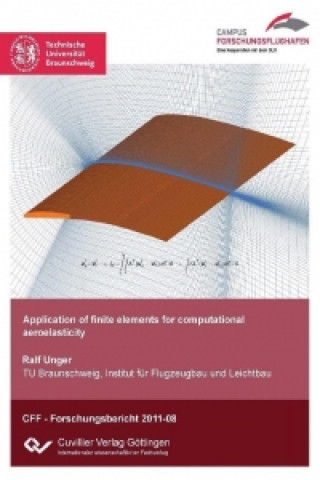
Kód: 12738797
Application of finite elements for computational aeroelasticity
Autor Ralf Unger
In this thesis, a coupled multiphysical system is considered, whereas the focus is upon aeroelas- tic problems. For a consistent formulation of such coupled systems, an energy based variational formulation is chosen to describe ... celý popis
- Jazyk:
 Angličtina
Angličtina - Väzba: Brožovaná
- Počet strán: 190
Nakladateľ: Cuvillier Verlag, 2011
- Viac informácií o knihe

Mohlo by sa vám tiež páčiť
-
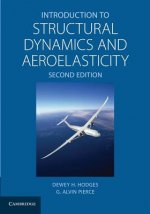
Introduction to Structural Dynamics and Aeroelasticity
84.02 € -
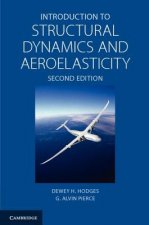
Introduction to Structural Dynamics and Aeroelasticity
135.98 € -
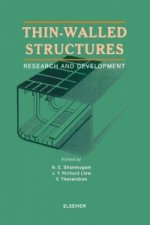
Thin-Walled Structures
330.02 € -
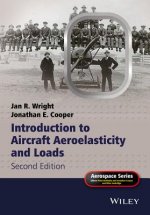
Introduction to Aircraft Aeroelasticity and Loads 2e
162.97 € -

Code of Federal Regulations Title 46, Shipping, Parts 140-155, 2015
39.47 € -
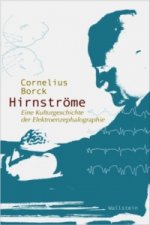
Hirnströme
38.86 € -5 %
Darujte túto knihu ešte dnes
- Objednajte knihu a vyberte Zaslať ako darček.
- Obratom obdržíte darovací poukaz na knihu, ktorý môžete ihneď odovzdať obdarovanému.
- Knihu zašleme na adresu obdarovaného, o nič sa nestaráte.
Viac informácií o knihe Application of finite elements for computational aeroelasticity
Nákupom získate 81 bodov
 Anotácia knihy
Anotácia knihy
In this thesis, a coupled multiphysical system is considered, whereas the focus is upon aeroelas- tic problems. For a consistent formulation of such coupled systems, an energy based variational formulation is chosen to describe initially the structural and ?uid subsystem by Hamiltonżs prin- ciple. Both basic ?uid model equations - inviscid and viscous ?uid models - are employed by this weak variational energy principle. This procedure allows to describe the coupled problem by the classical direct two-?eld approach as well as by a novel indirect three-?eld approach. To discretize the entire system consistently with ?nite elements, the CBS scheme is employed for the ?uid domain described by the Navier-Stokes equation in ALE frame of reference. This allows the ?uid domain to be temporally deformable, which is essential for aeroelastic computa- tions. The CBS scheme is veri?ed for a wide range of typical ?uid problems ranging from inviscid, viscous, incompressible and turbulent ?ows. A good agreement with data published in literature and with the further solver TAU are found, which underlines the applicability of the CBS scheme for di?erent ?uid ?ow models. The DG-CBS scheme as a novel and attractive approach has been derived from the continuous version. One important advantage of the DG version is the design of the element edge ?ux to be locally conservative. For the example of the laminar ?ow over the NACA0012 airfoil as well as for the panel ?utter problem, a comparison of the CBS and DG-CBS scheme is made on struc- tured ?uid grids including grid convergence studies. With biquadratic, more accurate results in terms of the ?utter frequency are obtained with DG-CBS scheme. Moreover, no global system of linear equations needs to be solved at the computational expense of addidtional element edge ?ux calculations with the DG version. This might be attractive for ?uid grids with a high number of degrees of freedom. Consequently, the whole coupled system is further discretized with ?nite elements includ- ing the structural subdomain, the deformation of the ?uid grid and the transfer scheme. For the ?uid grid deformation, it is found, that all of the presented sti?ness evaluation methods perform similarly. The sti?ness strategy based on the wall distance and the characteristic length is recom- mended to be used for the simple testcases with the unstructured grid. For a structured grid around an airfoil, the best grids are obtained with the sti?ness methods based on the wall distance. Thus, for general ?uid grid deformations, the method, which use a combination of the wall distance and the characteristic length, can be recommended and is hence applied for the panel ?utter problem. Based on the uni?ed weak variational coupling schemes, several data transfer schemes are introduced, which share the property of load and energy conservation. With a h-re?nement of the integration grid, a signi?cant reduction of the transfer error is observed for low-curved interface meshes. The decrease of the transfer error is limited by the facetting error, which is identi?ed for highly curved interface meshes and for a realistic wing con?guration. For the panel ?utter problem at Ma? = 1.0 and rp = 170, the Galerkin and the dual-Lagrange based transfer as well as the conservative interpolation gives similar results in terms of the frequency and amplitude of the LCO. With its local accuracy together with a global load conservation property and due to the e?ciency of a matrix-free transfer scheme, the dual-Lagrange based transfer is an attractive approach for the data transmission of the coupled system. A smooth transfer scheme is proposed, which uses the novel three-?eld coupling approach with a higher spatial order discretization of the connectivity frame. Regarding the time integration and equilibrium iteration, the three-?eld approach is assessed for a strongly coupled problem. With the use of the Newton-GMRES iteration scheme, the number of DN cycles is reduced for the three-?eld approach. Moreover, the same coupling matrices are identi?ed for the three-?eld approach, which alreay appeared within the iteration process of two-?eld approach. This allows the application of a simple staggered time integration scheme for the panel ?utter problem. The comparison of the two- and three-?eld approach shows that both, the frequency and the amplitude of the LCO, are only marginally a?ected. However, the smooth data transfer leads to a clean ?uid solution without arti?cial shocks, which has been observed with the two-?eld approach and a small number structural elements at the interface. Furthermore, a consistent time integration approach for the structure is proposed, so that both subsystems use the same temporal discretization. Here, similar results in terms of the LCOżs frequency and amplitude are obtained, when the Newmark or the consistent three-point backward di?erence scheme for the structural time integration of the panel is applied. Thus, the panel ?utter problem using a simple staggered time integration scheme with the consistent time integration for the ?uid and structural subsystem and with the proposed three-?eld approach could be analyzed in detail running numerous simulations. At subsonic ?ow conditions, the panel shows a static de?ection behavior in up- or downward direction depending on Ma? and rp, but indepentent of rm. On the other hand, the panel exhibits a LCO and the critical values of the dynamic pressure strongly depend on the mass ratio. For low values of rm, a supersonic dip in the stability boundary is observed. It is shown, that the frequency of the LCO increases with increasing Mach number, dynamic pressure and mass ratio. Moreover, a linear dependency between the frequency and the amplitude of the LCO for high mass ratios and low Mach numbers is found. Turbulence modeling with the aid of the CBS scheme in the context of an aeroelastic problem is employed in this thesis. The Spalart-Allmaras turbulence model in conjunction with the CBS scheme is primarily veri?ed with data found in literature and with the ?owsolver TAU for pure compressible ?uid ?ow over an airfoil. For the panel ?utter problem, the turbulent boundary layer leads to an additional damping behavior. The frequency of the LCO is una?ected by the Reynolds number, but a dependency regarding Re is noticed for the amplitude and the mean deformation. Finally, a strong shift of the critical dynamic pressure to higher values could be observed for the stability chart, which is caused by the damping in?uence. Subsequent work regarding this thesis certainly involves the investigation of the panel ?utter phenomenon in three dimensions. This is motivated by the good performance of the CBS scheme in 3D found in literature. Another topic, which should be considered further, is the application of the three-?eld coupling approach for more than two subdomains, e.g. ?uid-?uid-structure or ?uid-structure-structure interaction. In this context, the performance of the presented coupling scheme in conjunction with an incompressible ?uid could be a subject for research. Herein, the avoidance of the added mass e?ect due to an arti?cial compressibility within the CBS scheme is an interesting aspect. Moreover, attempts to improve the standard ?nite element methodology by a NURBS based isogeometric analysis can be observed in literature, see (CHB09) and the references therein. A NURBS based coupling scheme is a straightforward enhancement to the present methodology. Further, an adaptive re?nement - mesh, polynomial, or a combination of both - is surely an attractive approach to improve the accuracy of the methodology. Finally, from the CFD point of view, more precise numerical methods were established and thus, the CBS scheme could be enhanced with a transition prediction scheme as well as with a large or detached eddy simulation (LES/DES) methodology to capture more complex ?uid ?ow phenomena.
 Parametre knihy
Parametre knihy
32.67 €
- Celý názov: Application of finite elements for computational aeroelasticity
- Autor: Ralf Unger
- Jazyk:
 Angličtina
Angličtina - Väzba: Brožovaná
- Počet strán: 190
- EAN: 9783869559001
- ISBN: 3869559004
- ID: 12738797
- Nakladateľ: Cuvillier Verlag
- Hmotnosť: 254 g
- Rozmery: 210 × 148 × 10 mm
- Dátum vydania: 19. October 2011
Obľúbené z iného súdka
-

Dune
12.98 € -

Haunting Adeline
30.64 € -

Berserk Deluxe Volume 2
52.15 € -

White Nights
3.54 € -24 % -

Powerless
12.47 € -3 % -

Atomic Habits
17.04 € -24 % -

Dune Messiah
9.02 € -19 % -

Berserk Deluxe Volume 3
47.79 € -5 % -

One Day
11.05 € -23 % -

Berserk Deluxe Volume 1
44.54 € -12 % -

Iron Flame
16.33 € -24 % -

Surrounded by Idiots
10.04 € -16 % -

Harry Potter and the Prisoner of Azkaban (Minalima Edition)
27.59 € -32 % -

Gravity Falls Journal 3
21.91 € -

Heaven Official's Blessing: Tian Guan Ci Fu (Novel) Vol. 1
21.81 € -

The Creative Act
24.04 € -12 % -

Dune
9.73 € -24 % -

Hunting Adeline
31.75 € -

A Little Life
17.55 € -

Children of Dune
9.53 € -15 % -

Heaven Official's Blessing: Tian Guan Ci Fu (Novel) Vol. 2
20.39 € -3 % -

Bungo Stray Dogs, Vol. 8 (light novel)
16.02 € -

Percy Jackson and the Olympians 5 Book Paperback Boxed Set
47.38 € -

Solo Leveling, Vol. 1
21.71 € -

The Prisoner's Throne
9.43 € -28 % -

Court of Thorns and Roses
9.43 € -21 % -

Cry Baby Coloring Book
10.75 € -4 % -

Fourth Wing
14.91 € -24 % -

Icebreaker
9.43 € -15 % -

Berserk Deluxe Volume 6
47.79 € -5 % -

Avatar, the Last Airbender: The Kyoshi Novels (Box Set)
27.29 € -33 % -

The 48 Laws of Power
26.17 € -3 % -

House of Leaves
23.23 € -22 % -

Twisted Lies
9.73 € -18 % -

Dune Messiah
12.57 € -12 % -

No Longer Human
16.84 € -

48 Laws Of Power
22.42 € -5 % -

Twisted Games
9.43 € -21 % -

Caraval Paperback Boxed Set
41.40 € -3 % -

Solo Leveling, Vol. 2
22.21 € -

Open Circuits
36.93 € -9 % -

Berserk Deluxe Volume 5
51.34 € -

Heaven Official's Blessing: Tian Guan Ci Fu (Novel) Vol. 3
16.84 € -18 % -

Berserk Deluxe Volume 4
47.08 € -7 % -

Court of Mist and Fury
9.33 € -21 % -

SOLO LEVELING V08
20.49 € -2 % -

English File Upper Intermediate Multipack A (4th)
23.43 € -

CHAINSAW MAN V14
11.25 € -13 % -

Before the Coffee Gets Cold
9.73 € -24 %
Osobný odber Bratislava a 2642 dalších
Copyright ©2008-24 najlacnejsie-knihy.sk Všetky práva vyhradenéSúkromieCookies



 21 miliónov titulov
21 miliónov titulov Vrátenie do mesiaca
Vrátenie do mesiaca 02/210 210 99 (8-15.30h)
02/210 210 99 (8-15.30h)